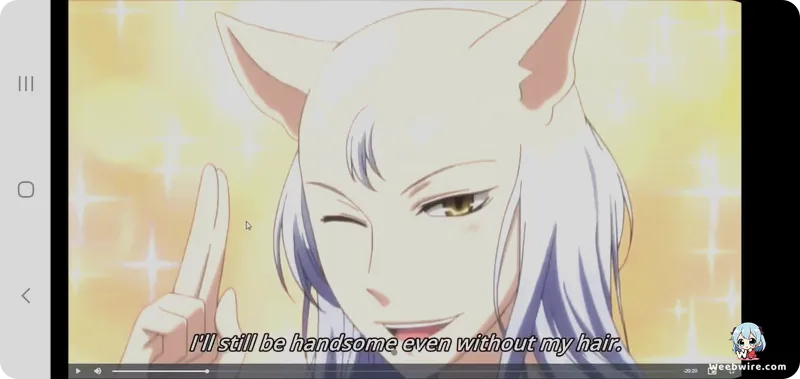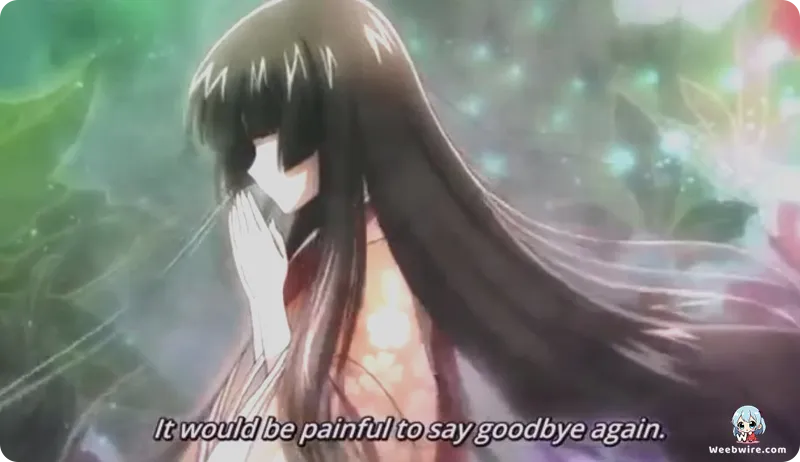"Gugure! Kokkuri-san" Explores Supernatural Comedy with Quirky Characters and Brilliant Meta-Humor

Gugure! Kokkuri-san, the celebrated supernatural comedy that burst onto screens in October 2014, swiftly captivated global audiences with its utterly whimsical premise and an unforgettable ensemble of delightfully eccentric characters. Produced by the acclaimed TMS Entertainment, this animated adaptation of Midori Endō's original manga masterfully intertwines traditional Japanese folklore with a modern, absurd slice-of-life narrative. The series centers around a peculiar elementary school girl whose life is perpetually and hilariously interrupted by meddling spirits. Far from a conventional supernatural narrative, Gugure! Kokkuri-san distinguishes itself through its relentless meta-humor, surprising character quirks, and a profound, though often subtly conveyed, exploration of loneliness and the universal quest for connection.
The Unconventional Guardians
At the heart of this comedic gem is the dynamic between the stoic protagonist, Kohina Ichimatsu, and the titular fox spirit, Kokkuri-san. Kohina, who famously proclaims herself a 'living doll,' exhibits an almost robotic lack of emotion and an unwavering devotion to instant noodles. This character trait forms the bedrock of her unique interactions. When Kokkuri-san is inadvertently summoned through a child's game, he quickly becomes genuinely concerned by Kohina's unhealthy habits and her apparent social isolation. What begins as an attempt at spiritual haunting rapidly escalates into a desperate, often uproarious, mission by Kokkuri-san to become a responsible guardian figure, determined to ensure Kohina eats proper meals and engages with the world. This unconventional premise alone sets the stage for a multitude of truly unique comedic scenarios.
A particularly surprising and enduring facet of Kokkuri-san's character is his gender fluidity. While primarily manifesting as a handsome male fox spirit, Kokkuri-san frequently shifts into a stunning female form. This transformation is not merely for disguise; it is often deployed for maximum comedic impact, sometimes to manipulate others, or simply because the situation demands it. The anime boldly embraces the humor derived from this duality, showcasing other characters' bewildered or preferential reactions to both forms. This ability to switch genders adds an unpredictable layer to Kokkuri-san's already volatile personality, which oscillates between doting parental figure and vain, easily flustered spirit. It stands as a refreshing and modern reinterpretation of traditional yokai lore.
A Masterclass in Meta-Humor
The series is also a masterclass in breaking the fourth wall and employing sophisticated meta-humor. Characters frequently acknowledge their existence within an anime, comment on production tropes, or directly address the audience. Kokkuri-san, in particular, often despairs over Kohina's 'protagonist' behavior or laments the comedic clichés they are seemingly forced to endure. This self-awareness elevates the comedy beyond simple slapstick, fostering a witty dialogue between the show and its viewers. It is not uncommon for a character to point out a poorly drawn background or a convenient plot device, inviting the audience to be in on the joke. This meta-commentary is a signature element of the anime, significantly contributing to its cult status among fans who appreciate clever, self-referential humor.

Beyond the Main Duo
Beyond Kokkuri-san and Kohina, the cast expands to include other equally bizarre spirits. Inugami, a fiercely loyal dog spirit, develops an obsessive attachment to Kohina, manifesting in both adorably cute and unsettlingly terrifying ways. Inugami's capacity to switch between a small, endearing dog form and a more menacing, human-like appearance, often coupled with a disturbing devotion to Kohina, provides a consistent source of dark humor. Then there is Shigaraki, a lazy, alcoholic tanuki spirit with a penchant for gambling and a surprisingly tender spot for children, despite his generally irresponsible demeanor. Each new addition to Kohina's unconventional household brings their own distinct eccentricities, further escalating the chaotic yet endearing dynamic. The interactions between these disparate personalities, all vying for Kohina's attention or attempting to 'fix' her, form the backbone of the series' enduring comedic appeal.
TMS Entertainment's Craftsmanship
TMS Entertainment, the esteemed studio behind Gugure! Kokkuri-san, is renowned for its diverse portfolio, which spans action-packed series like Lupin the 3rd and Detective Conan to character-driven comedies. Their exceptional work on Gugure! Kokkuri-san brilliantly showcases their versatility, delivering fluid animation that perfectly complements the anime's impeccable comedic timing and expressive character reactions. The animation style frequently shifts to emphasize gags, employing simplified or exaggerated designs for heightened comedic effect. This is a hallmark of expertly executed anime comedy. The vibrant color palette and distinctive character designs, particularly Kokkuri-san's traditional attire and Kohina's doll-like features, are visually striking and contribute significantly to the anime's unique aesthetic. The studio's impressive ability to seamlessly balance the supernatural elements with everyday absurdity ensures the fantastical feels grounded in the characters' bizarre reality.
The Voices Behind the Laughter
The voice acting ensemble also warrants special commendation for breathing life into these unforgettable characters. Daisuke Ono's portrayal of Kokkuri-san expertly captures the spirit's blend of vanity, exasperation, and underlying affection. Ryouta Hirohashi's deadpan delivery as Kohina is pitch-perfect, rendering her seemingly emotionless lines incredibly funny. Takahiro Sakurai's performance as Inugami perfectly conveys the character's unsettling devotion, while Jouji Nakata's deep, gravelly voice lends Shigaraki a unique, world-weary charm. The palpable chemistry between the voice actors elevates the humor and emotional depth of their interactions, even in the most absurd situations. Their remarkable ability to switch tones from serious to utterly ridiculous on a dime is a testament to their skill and a key factor in the anime's enduring charm.
A Modern Twist on Folklore
Ultimately, Gugure! Kokkuri-san subtly weaves in elements of Japanese folklore, yet consistently subverts expectations. While it features traditional yokai like fox spirits and tanuki, it rarely adheres to their conventional portrayals. Instead, it ingeniously reinterprets them through a comedic lens, highlighting their flaws and human-like eccentricities rather than their mystical powers. This playful deconstruction of folklore adds an intellectual layer to the humor, appealing to viewers familiar with Japanese mythology while remaining entirely accessible to newcomers. The anime's lasting appeal resides in its ability to take a deceptively simple premise, a lonely girl and her unusual spirit guardians, and infuse it with layers of clever writing, surprising character development, and laugh-out-loud moments that stem from its unconventional approach to both comedy and the supernatural. It is a series that definitively proves even the most peculiar families can find a way to coexist, especially when the lure of instant noodles is involved.
Credits
Gugure! Kokkuri-san
Author
Midori Endō
Cover Art
Midori Endō
Studio
Publisher
Square Enix
Producers





